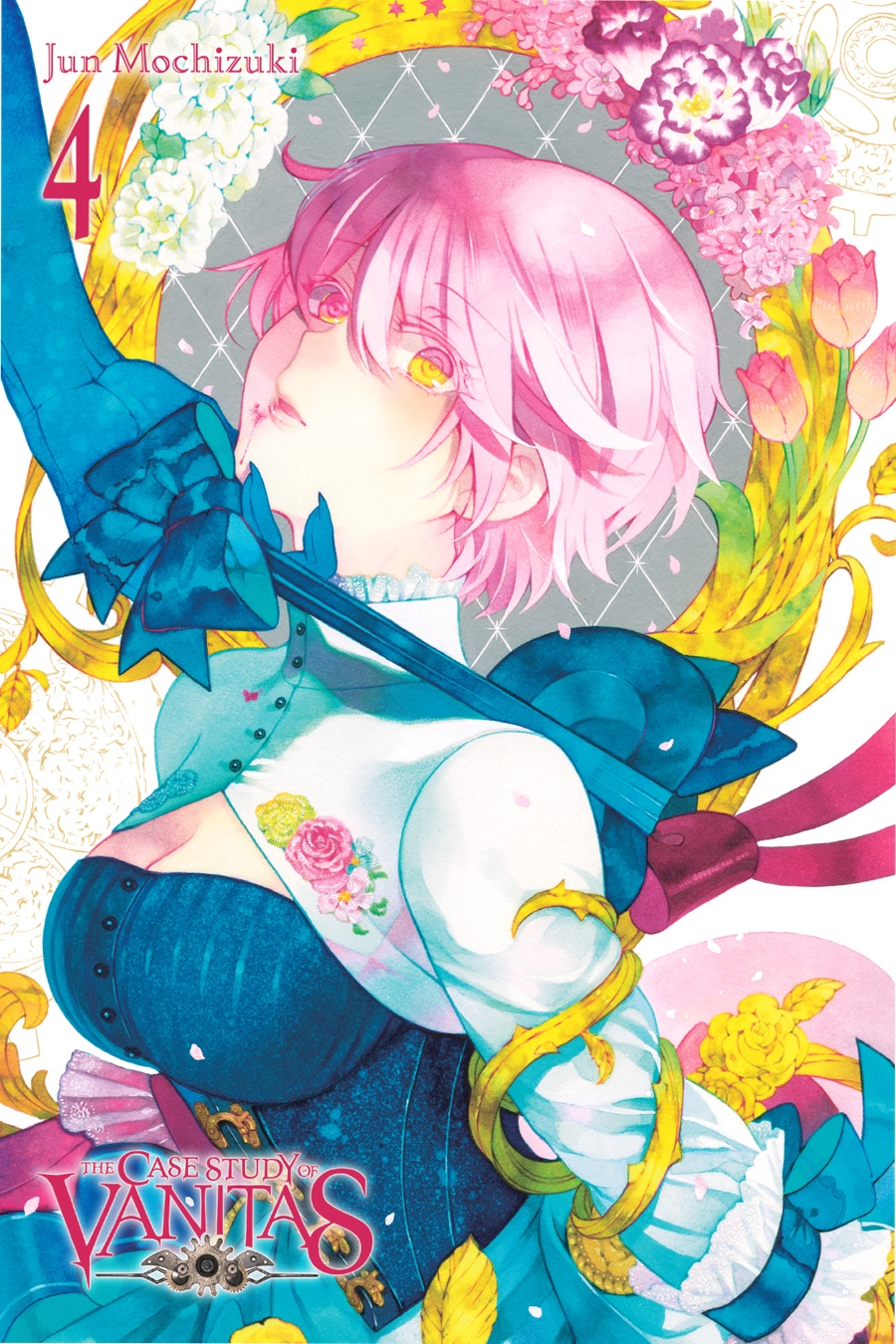Volume 4 is a cover for Jeanne. She is wearing the dress she wore on her date with Vanitas, and Vanitas’s hand is reaching into the cover to pull on the ribbon of her hat/cradle her face. The way the ribbon is pulled taut with Jeanne leaning forward makes if look like she’s being pulled his direction. This fits with the events of the volume, where Jeanne, meaning to get Vanitas to hate her by acting like she has feelings for him, has her plan seen through immediately and is toyed with by him instead. Unfortunately for Jeanne, she is dealing with an expert manipulator and such underhandedness does not come naturally to her.
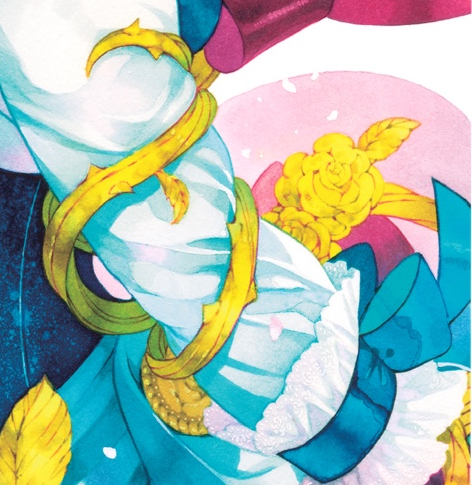
Pulling her in the opposite direction are rose vines wrapped around her arm. These vines probably indicate that she’s being held back by her past (similar vines cling to Dominique in her cover on volume 8, a part of the story where Dominique’s unresolved past comes to the forefront). Jeanne holds an irrational belief that she will be punished for pursuing her desires, and that the punishment will land on someone else even if it’s meant for her. This twisted way of thinking was created from the string of disasters that her life had been up until the Gévaudan arc, when Vanitas promises to save Chloé and succeeds in doing so. (Although, Jeanne deserves some credit for being one of two reasons that make Chloé decide to stay.)

The contents of Jeanne’s frame is the window she saw behind Chloé’s head on the day they met. The falling pink petals are reminiscent of the flowers of the field Jeanne and Chloé found, and also of the flower petals of Vanitas’s large scale formula revision that saves Chloé. All in all, the frame is both Jeanne’s past and near future. (There are some stars speckling the frame that don't have an explanation at the moment beyond the usual vampire connection.)
This frame is dense with flowers, and unlike the frames so far, these flowers are living. Only the gold roses do not have the appearance of life, instead resembling more the roses of Vanitas and Dominique’s frames. Starting clockwise from the top left, they are: gardenias, which mean refinement; santan/Indian jasmine, which means amiableness; carnations, which mean pride and beauty; and lastly tulips, which mean perfect love.
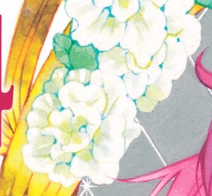
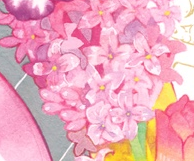
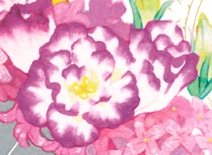
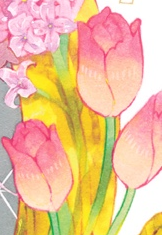
Amiableness and perfect love fit what Jeanne is trying to pull off with her date with Vanitas, but she doesn’t quite hit the mark when her acting breaks down near the end. Neither does she manage to be refined given her clumsiness. However, doubtlessly she is proud and beautiful.
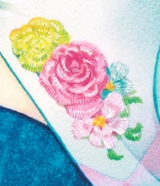
There are some flowers remaining and those are the ones embroidered on the dress. They are a yellow rose, a pink rose, a blue forget-me-not, and a pink forget-me-not. Forget-me-not is Vanitas’s birth flower, and the meaning is the same as the name. The forget-me-nots are perhaps Vanitas and Jeanne themselves. After all, the date is focused on their relationship, it shows Jeanne’s changing perception of Vanitas, and both are associated with death. Vanitas dies in this story and he promises to kill Jeanne, even going so far as to say he “won’t die before [her]” to that end. Noé, whose birth flower is aster (meaning “I will never forget you”) may be remembering them both. Yellow roses mean jealousy or unworthiness, and pink roses mean perfect happiness. Jeanne is shown to be feeling unworthy in the Gévaudan arc. Perfect happiness for Jeanne remains a hope.
